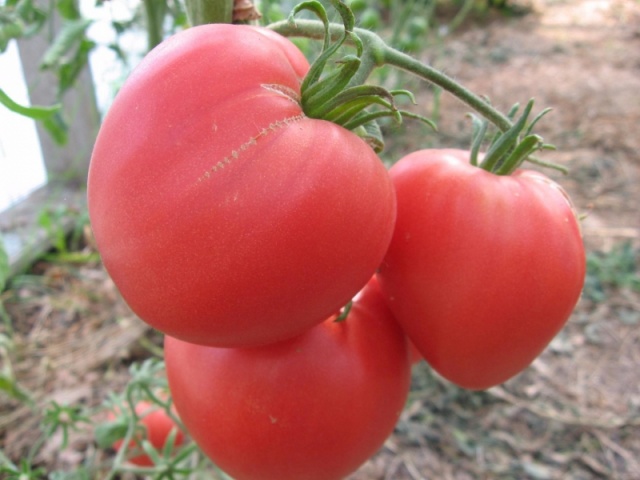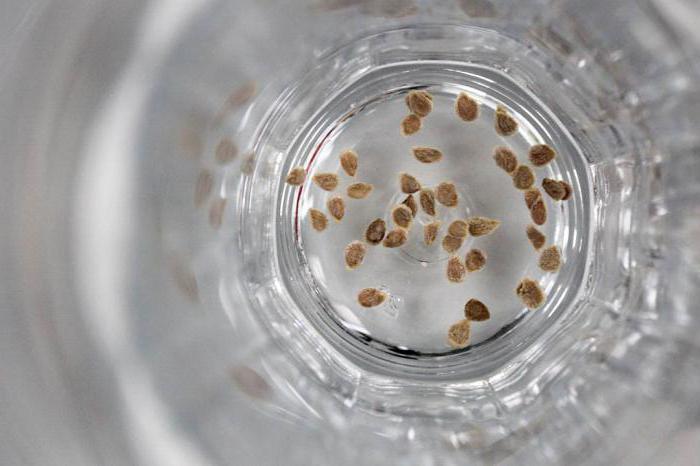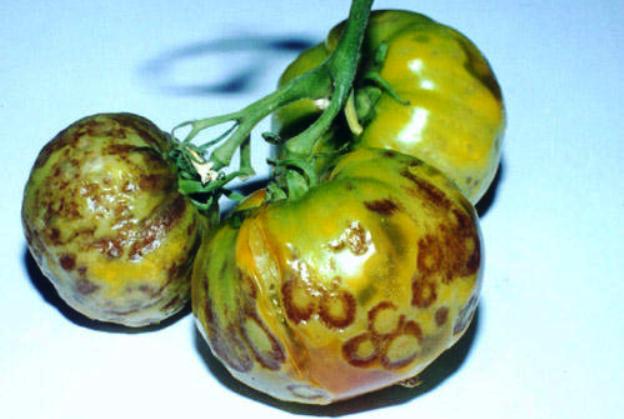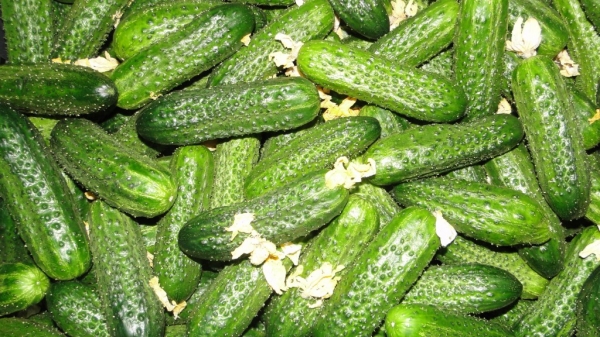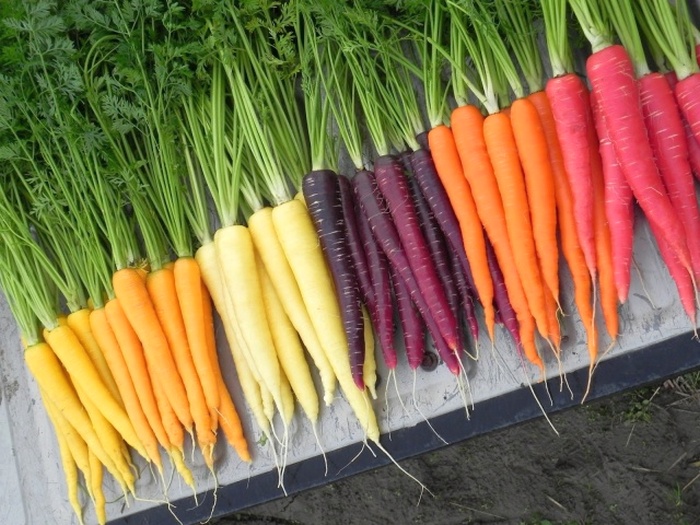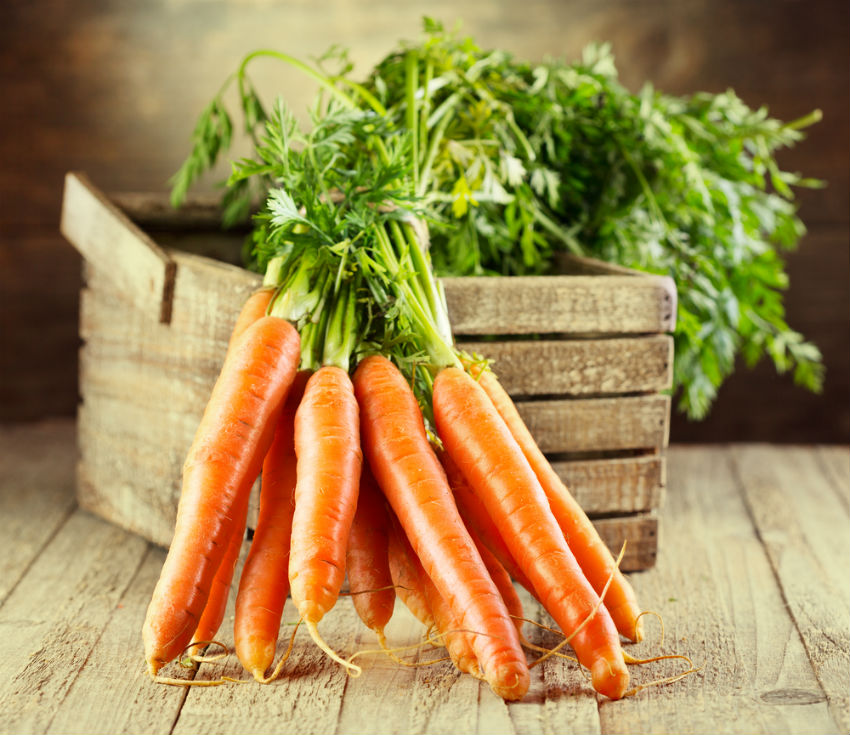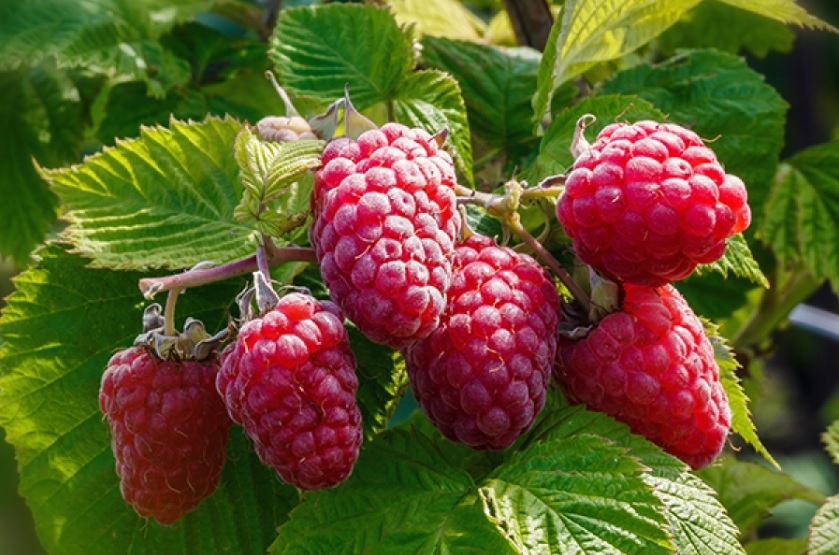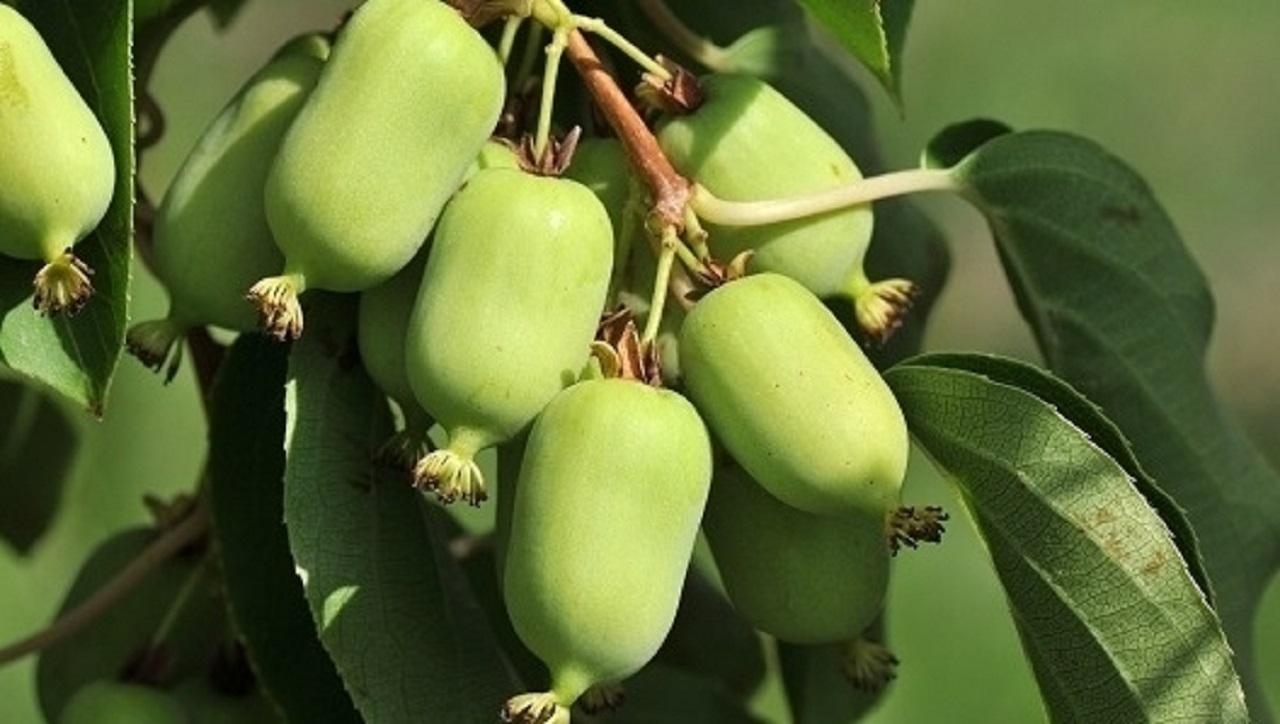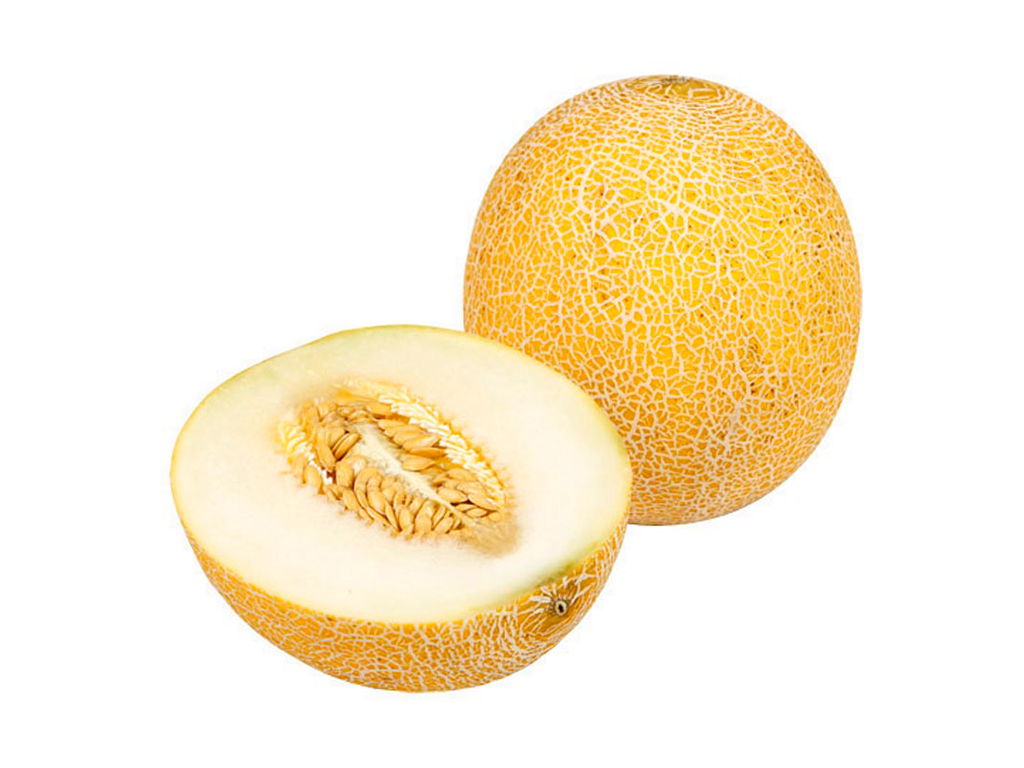Content:
Tomato The heavyweight of Siberia is a determinant undersized tomato variety for growing in the open field. Differs in especially large fruit size, with sweet pulp.
The variety belongs to the selection of the agricultural firm "Siberian Garden" and is not a hybrid, which allows you to independently harvest seeds for further planting within 3-4 years.
general characteristics
The Heavyweight of Siberia tomato is early maturing. The average fruiting period is 95 to 105 days after germination. With proper care, the yield reaches 2-4 kg of fruits per bush. The average weight of fruits is about 400-500 gr., But when the stepson's ovaries are removed, the weight of the tomato can increase to 1 kg.
Bushes of a dark green color with medium foliage and a slightly corrugated leaf shape, up to 70 cm high. It is recommended to tie the stems of the bush and leaves with fruits to the trellis, which can be damaged by heavy weight and come off the trunk. The pulp of a tomato is dark pink in color, flattened heart-shaped. The taste is sweet with a slightly expressed characteristic sourness. The skin is thin, glossy, does not crack.
The variety is suitable for growing in a harsh climate, the highest yield is achieved at an air temperature of + 28˚C + 30˚C.
Agrotechnological features
Due to its unique frost-resistant properties, Tomato Siberian Heavyweight, the characteristic and description of the variety, its agrotechnological features and recommendations allow you to grow a rich harvest in cold climatic conditions.
For planting Siberian Heavyweight tomatoes, fertile soils in a well-lit area are suitable, without stagnant water.
The most suitable precursors are legumes, onions, garlic, mustard.
Disembarkation dates:
- Seeds are sown in the ground in March - early April 60-65 days before the expected date of transplanting seedlings into the ground. In this case, the harvest time will be in June - July;
- In April, you can plant seedlings in heated greenhouses, hotbeds;
- In late May - early June, the Heavyweight of Siberia can be planted in open ground.
Landing scheme
It is recommended to plant tomatoes of the Siberian Heavyweight variety at a distance of 40-50 cm between bushes and 70-80 cm between rows. It is recommended to plant no more than 3-5 plants per 1 m². Despite the short stature of the variety, when the planting thickens, the plants are not ventilated to the required degree and receive less sunlight, which negatively affects the state of the plants and productivity.
Bloom
The variety belongs to bee-pollinated crops. Flowering occurs 20-35 days after planting seedlings in open ground.
Plant care consists of:
- Regular watering with settled water,
- Timely weeding of row spacings from weeds,
- Regular fertilizing with mineral fertilizers recommended for this variety,
- Cupping stepchildren to increase yields and increase the mass of fruits,
- Prevention of diseases, prevention of damage to fruits by pests and diseases.
In terms of taste, shape and size of fruits, the Heavyweight of Siberia is similar to the varieties Alsou, Danko, Velmozha.
Diseases and pests
The most common pests of the Siberian Heavyweight are:
- Root rot that affects the root system, causing the plant to wither and die. To prevent it, the plants must be planted strictly according to the recommendations and the bottom 2-3 leaves must be removed;
- Late blight is a fungal disease that affects a plant of the Solanaceae family. Causes blackening of leaves, their wilting, which leads to the death of the plant. Prevention of the disease is spraying the seedlings with a weak solution of potassium permanganate, and after 14 days - with a solution of Bordeaux mixture in a proportion of 100 grams per 10 liters of water. slaked lime and 100 gr. copper sulfate;
- Tobacco mosaic, causing yellowing of leaves and stunting of plant growth. This leads to a loss of plant resistance to pests and a decrease in yield. Soaking the seeds in a weak solution of potassium permanganate and a dressing agent before planting will help prevent disease.
Prevention of diseases of the Siberian Heavyweight is a complex of preventive measures, treatment of plants at all stages of crop cultivation.
Determinant tomato Heavyweight of Siberia, its positive characteristics and description of the variety attract both novice gardeners and operating farms.
Advantages and disadvantages of the variety
Thanks to the work of breeders, the variety has the following advantages:
- Early ripeness;
- Determinancy;
- Excellent taste of tomatoes;
- Frost resistance;
- Heavy fruit weight, large size;
- Disease and pest resistance;
- Good fruit transportability.
The disadvantages of the variety include:
- Low yield in the absence of cupping stepsons;
- Poor tolerance of an increase in air temperature over 30 ° C;
- Low yield when planting on infertile soil, poorly lit areas;
- The need to tie up both stems and brushes with fruits.
Siberian Heavyweight tomatoes have long gained popularity among amateur vegetable growers and farms, thanks to the characteristics and agrotechnical properties of growing. Due to their excellent taste, they are perfect for making salads, tomato juice, pasta.
